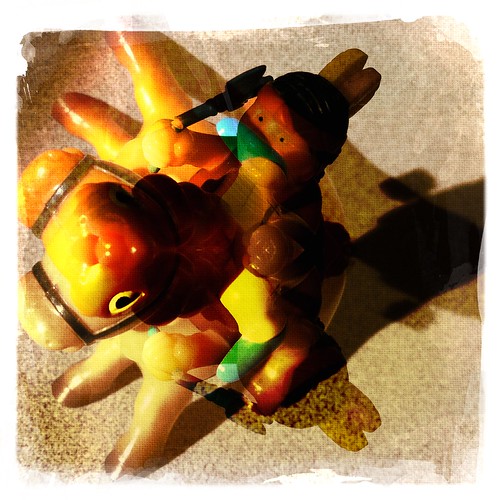The above link is from Uptown Magazine Online - Winnipeg's Online Source for Arts Entertainment & News (10/22/09), an e-zine in Winnipeg, Manitoba Canada. It is within that URL where I received an extremely anemic and poorly written, bad review of my solo art video exhibition, RoundUP by self-proclaimed "inter-media artist" & critic, Sandee Moore.
I'm not one to hold grudges against someone critiquing my work. But, when that critique suffers from possessing any critical analysis of the available work, I tend to feel slighted that my name is even mentioned, in this case almost as an afterthought—the proof is in the pudding here—not even one title of my works were mentioned in her so called "critique," of which four sentences were devoted to my exhibit. It's apparent that Ms. Moore lacks any understanding of intertextuality or semiotics, but this is not to blame Ms. Moore for her shortcomings, only to warn others when critiquing work make sure you understand and analyze that work before you attempt to write about it. Where Ms. Moore is anemic in analyzing my work is in her lack or inability to negotiate notions of stereotypes, power structures and how representations work within notions of power. Supposedly in Ms. Moore's world, everyone knows about these stereotypes and her analysis of my work consists of "his seizure-inducing, rapid editing does little, if anything, to provide a new context for his source material." The editing is only the re-presentation of the "stereotypes." It is within the juxtapositions of the imagery, their relationships and the "re-presentations" where the context exists, intertextuality; not to mention only three of my works include rapid editing.
This particular blog is not to slander Ms. Moore, only heed warning to individuals who proclaim they are "critiquing" art when in fact, they have only offered an opinion (obviously Ms. Moore was capable of critiquing David Garneau's work in the text above the four sentences she proffered her opinion where she scrutinized my works). Without sufficient analysis a critique is simply an opinion. So, Ms. Moore and any other self-proclaimed, critic out there, when dealing with imagery be sure you fully comprehend how images work when placed or inserted next to another image, also know the original context of that imagery before you attempt to criticize it.
I have no problem accepting a bad critique/review, that is well-written, which didn't seem to exist as an after-thought or because my exhibit was one of two showing concurrently.
So having said all that, here is an example of an analytically written critique of Kemosabe version 1.0 one of my "seizure-inducing" pieces (which can be found at the—Finger Lakes Environmental Film Festival website):
Kemosabe version 1.0 disrupts the colonial racial logic of the "American Frontier" by recalibrating the relationship between Tonto and the Lone Ranger. Through syncopated beats of dialogue and music, Mendoza reworks an offensive stereotype for Native Americans whose history in U.S. cultural production begins with the dime novels of Zane Grey and continues through radio shows, comic books, serial movies, and television series, where the characters were portrayed by actors Jay Silverheels and Clayton Moore. Here, the ambiguous meaning of "kemosabe," Tonto’s name for the Lone Ranger, foregrounds the productive possibilities for repurposing the toxins of cultural artefacts.
—curators’ essay by Dale Hudson and Sharon Lin Tay
AN UPDATE to the traveling and vastly growing Round-UP (Santa Fe) exhibit, another view from an academic's perspective: Blog Review of Round-UP Santa Fe, by Bill Adams.



